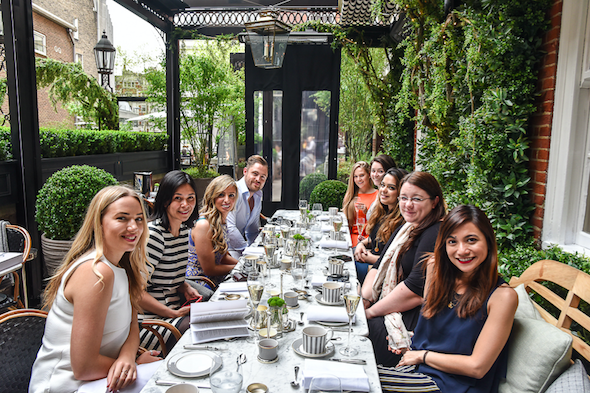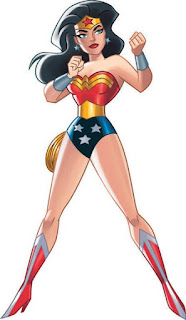Artist/Educator Statement:
First, off let me say that I absolutely loved my group for this collaboration project. We proved that group projects can be a success in the classroom and students can collaborate in positive ways like teachers want them to. From the start of this project, we all just loved to share our ideas and listen to each other. We had such a good group conversation the first couple of days, deciding what topic we wanted to focus on. We couldn't stop talking about all the ideas we had. This just proved to me that just like us, the students we teach will have a lot to contribute from their experiences, they have all of these amazing ideas in their head. As teachers we have to give them opportunities to share their amazing ideas and use their creativity in the classroom. We should allow their ideas/concepts to develop and come to full fruition. Also, I think naturally with group projects there are some students that are more of the natural-born leaders and other students that are more quiet leaders. I felt like I was more of a quiet leader, but sometimes if you get too many strong-willed students in one group it doesn't work so you need a balance of the strong leaders and the silent leaders to know how to follow and compromise while still adding their ideas. We really came together as a group. I think the topic of women's experiences at BYU and sharing our individual experiences with that was really uniting and liberating. There was a sense of relief as we shared our stories, and realized that we all had similar feelings with our experience of going to school at BYU.
We all added something to the project: Paige was the one to come up with the baking cookies idea of the cookie-cutter BYU experience and put together the picture video, Mandarin was the group member that always asked all the right questions to get our group headed in the right direction, Meagan was the audio specialist and also edited the video, Kaily really helped with providing props and materials we needed like the aprons, Katelyn wrote out the whole script online with all of our lines, the Prufrock poem and sound cues, and Kassidy and I were the reinforcers touching up a lot of the project and providing good feedback and commentary throughout the process. Kassidy, Paige and Mandarin were the theater majors of our group and so they had a lot of experience and expertise with the theatrical aspects of the project. They choreographed our body movements in the presentation while Meagan, Katelyn and I (the English teaching majors) organized the lines and arranged the script so the Prufrock Poem and interview stories flowed nicely. I contributed a lot to making sure the script was organized in it's ideas and sounded good, as well as found a lot of good Prufrock lines to match our interview stories of good and bad dating and roommates experiences.
I also learned how media and theater performance go together and media can enhance theater! I just read Meagan's blog and want to remember what she said: "I think I also learned a lot more about how literature, theatre, and media can all work together to create some amazing art." This is one of the big things I also learned. The Thevenin article says, "Media arts educators who explore the relationship between media and performance help their students to create new ways of performing and of understanding performance." I also think it's important to let our students make creative decisions, polish their work/editing, and get peer feedback like we did!
After our final group performances on Monday, we had a great class discussion on how we can take what we learned from this project and use aspects of it in our future classroom. Some of these comments I will share were mentioned by my classmates,but I really love what they said. As an English teacher, I really loved how our group took an English text like the Prufrock poem and were able to use it in creative ways to better understand it. Katelyn mentioned this and said how we were able to take a difficult text, that is really hard for many student's to understand, and make it more accessible by performing it and manipulating it in creative ways. Thevenin adds to this: "The students make these texts their own through their performance of them." This made me think of hard texts like Shakespeare, and how I can help my students better understand Shakespeare by allowing them to perform it. And not just perform it but add visual, audio, and body effects. Students are so good with technology, so why not have them incorporate technology and media more in the English classroom? I think this could help some of the old classic, difficult texts like Shakespeare and T.S. Elliot come to life for students.Theater groups across the world take Shakespeare and put a spin on it in their theater performances. Why not have my students do the same thing? Why not allow them to use more performance, technology, and collaboration while learning these texts? Another classmate of ours mentioned how she liked that our professor's main focus with this project was the "process" and not so much the product. Too often, teachers are so focused on the product and forget how important the process is in student learning and exploring creativity. I like how this project was broken up into a step-by-step process. One day we focused on identifying and narrowing a topic to pursue, another day we did interviews, another day we focused on the script, then the media, then the bodies, then the visual and audio, etc. Learning is a process and as teachers we should remember to stress the process. I also think I can use audio and visual technologies and body movement more in the classroom to help with student learning. This makes learning more visceral and lively in the classroom environment, which will help my students retain their learning.
My favorite part of this process was finding a topic/story we were passionate about telling (student choice/interest)and then using the interview process to learn more about our subject. First off, this proved to me how important it is to give our student's choice in some of the assignments and projects they do, because they will most likely produce better work/projects when they are interested and passionate about what they are doing. Second, this whole project taught me a lot about learning from other people, not just from my classmates but the interviews we did outside of class. I can have my students interview other people outside of class so they can see that learning is something that happens not just in school but outside of school and the classroom, when they go out into the world and inquire. Finally, I like collaboration projects, whether they be creative or not, because they incorporate so many different types of learners and abilities. Projects like this allow every member of the group to contribute something special and learn from their peers. I learned a lot from my group members, but also a lot from watching the other group. I learned a lot from this class about using critical creativity and intention in the classroom, and I'm excited to go into the classroom and have this new mindset.
Here's a link to our final script:
https://docs.google.com/document/d/1VBnQ5zgKJb_I6IAB-rAHros0vodQM7oHQhJRFN4IV2s/edit?usp=sharing
For future reference:
Thevenin article: Performing and Media
https://drive.google.com/file/d/0B_dmVHISIRL4R0VZWmdGNnI1aFE/view



















